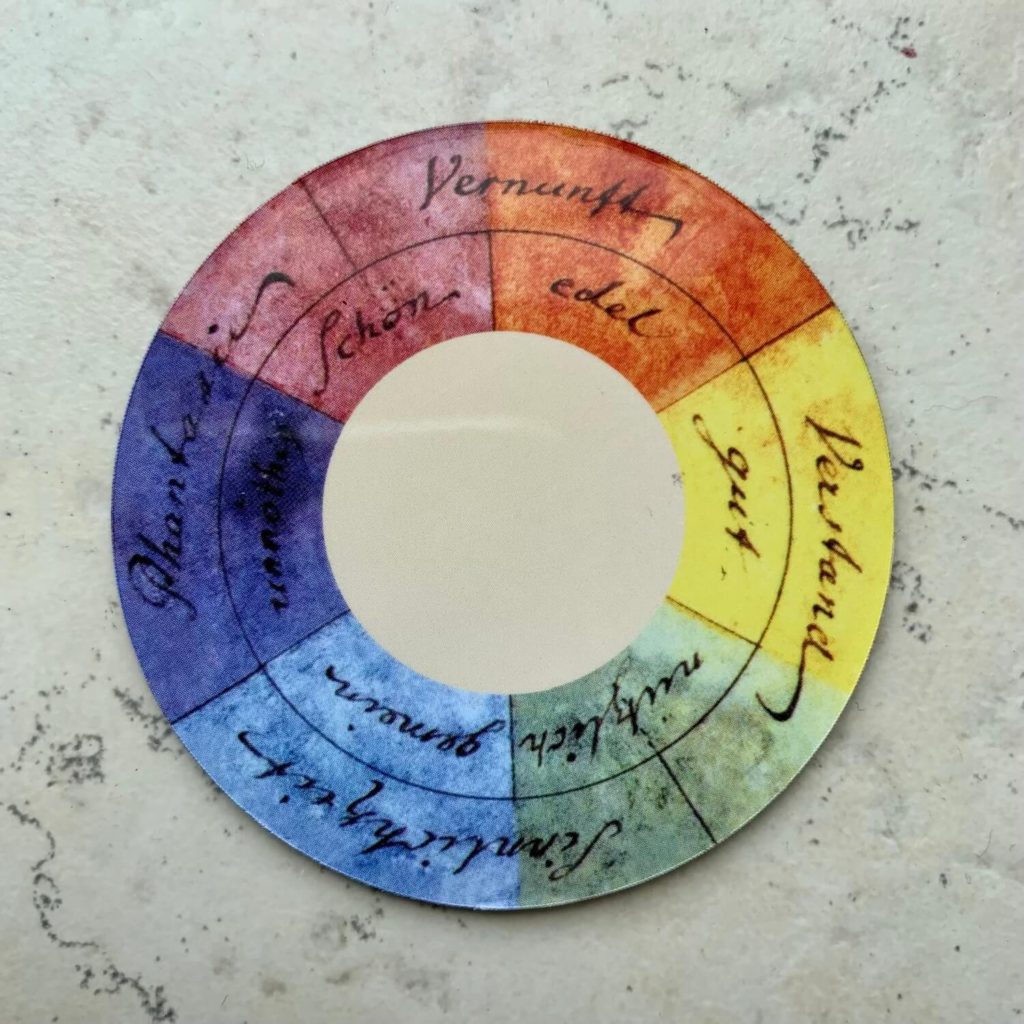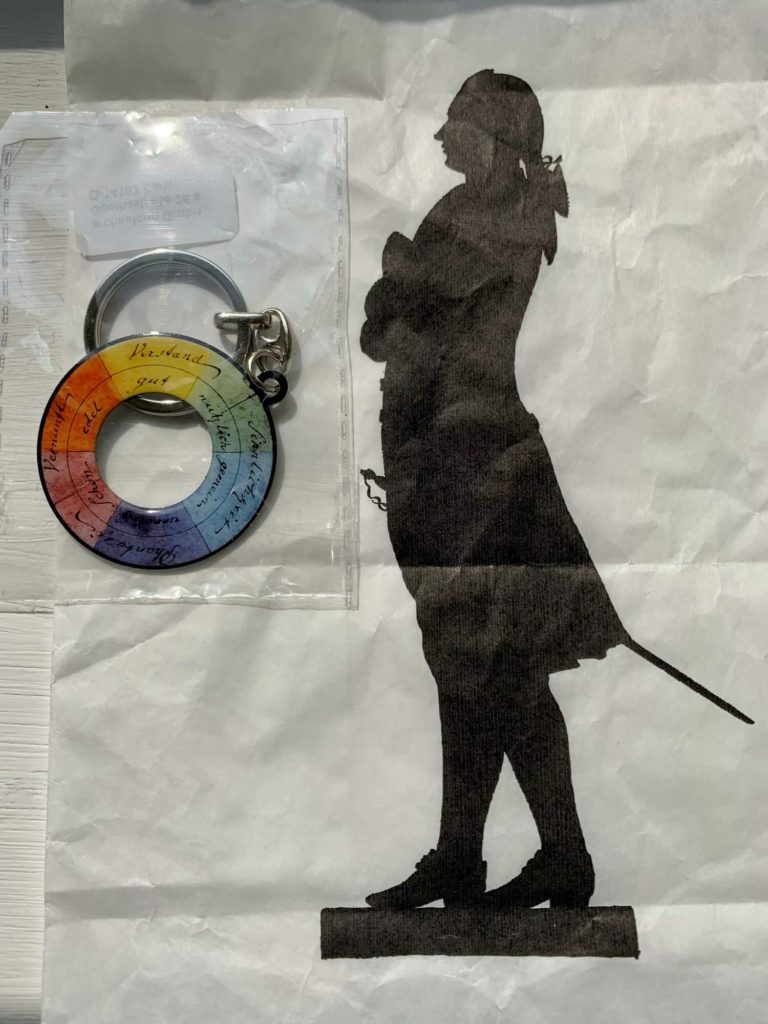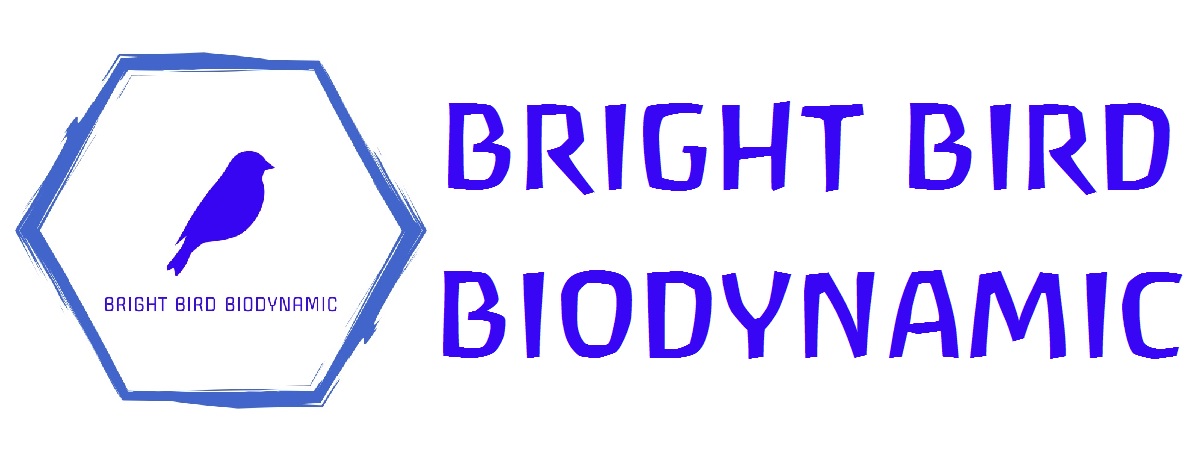

在歐洲其中一天參觀了歌德故居,買了他在 Theory of Colours 中的提出的色彩輪(Goethe’s colour wheel)作記念品,查看資料才發現這樣去理解顏色很有趣
中學時被填鴨式教育灌輸了「牛頓的物理智識」,唯物科學只會認同牛頓提出的理論,黑暗只因為沒有光的存在,而白色光是由紅色到紫色不同光譜的顏色組合而成,可藉由三棱鏡分開
但歌德在二百多年前已經覺得牛頓的理論不對,他認為色彩是由於光明和黑暗同時存在而形成,黑暗不是由於沒有光明,黑暗是色彩的一種成份,我的理解是歌德的理論是一種以人生理和心理的感知角道去理解色彩,正如印刷也是以墨水的「黑暗」去調出色彩一樣
所以 Rudolf Steiner 寫過以下一段文字:
Modern natural science sees darkness as a complete nothingness. According to this view, the light which streams into a dark space has no resistance from the darkness to overcome. Goethe pictures to himself that light and darkness relate to each other like the north and south pole of a magnet. The darkness can weaken the light in its working power. Conversely, the light can limit the energy of the darkness. In both cases color arises. — Rudolf Steiner, 1897
歌德說太陽光是最光明無色的顏色,當光線被稍微減弱的時候會變成黃色,再減弱就會是橙紅色,所以最接近光明的顏色便是黃色。而另一方,當黑暗被照亮的時候,藍色便會出現,那種深藍會接近一種美麗的紫色
… white that becomes darkened or dimmed inclines to yellow; black, as it becomes lighter, inclines to blue. -Goethe
所以歌德發明了圖中的色彩輪,他認為一種顏色會喚起另一種相對的顏色,每種相對的顏色會在輪中相對,黃色需要紫色,橙色對應藍色,而黃加藍形成的綠色相對十分重要的 magenta 洋紅色 (當時還未有這個字),而六種顏色各有不同美學的特質,歸納於四種人類的認知,這樣去理解色彩,不是比牛頓那種枯燥地抽離的唯物觀更有美感嗎?
When the eye sees a colour it is immediately excited and it is its nature, spontaneously and of necessity, at once to produce another, which with the original colour, comprehends the whole chromatic scale. — Goethe, Theory of Colours
看完這些資料就會開始明白為何人智學的歌德館只用三種顏色(黃、靛藍和洋紅)作壁畫,未來有機會再寫
https://en.m.wikipedia.org/wiki/Theory_of_Colours
https://www.themarginalian.org/2012/08/17/goethe-theory-of-colours/
https://www.faena.com/aleph/goethes-fascinating-color-theory
